#Human | Technology
Explore tagged Tumblr posts
Text

#grok#based ai#grok gets it#fuck musk#fuck trump#us politics#trump administration#groks a bro#lol#meme#memes#humanity#technology#relatable memes#relatable#funny#lmao#ironic
3K notes
·
View notes
Text
Here's the top 2 stories from each of Fix The News's six categories:

1. A game-changing HIV drug was the biggest story of 2024
In what Science called the 'breakthrough of the year', researchers revealed in June that a twice-yearly drug called lenacapavir reduced HIV infections in a trial in Africa to zero—an astonishing 100% efficacy, and the closest thing to a vaccine in four decades of research. Things moved quick; by October, the maker of the drug, Gilead, had agreed to produce an affordable version for 120 resource-limited countries, and by December trials were underway for a version that could prevent infection with just a single shot per year. 'I got cold shivers. After all our years of sadness, particularly over vaccines, this truly is surreal.'
2. Another incredible year for disease elimination
Jordan became the first country to eliminate leprosy, Chad eliminated sleeping sickness, Guinea eliminated maternal and neonatal tetanus, Belize, Jamaica, and Saint Vincent & the Grenadines eliminated mother-to-child transmission of HIV and syphilis, India achieved the WHO target for eliminating black fever, India, Viet Nam and Pakistan eliminated trachoma, the world’s leading infectious cause of blindness, and Brazil and Timor Leste eliminated elephantiasis.
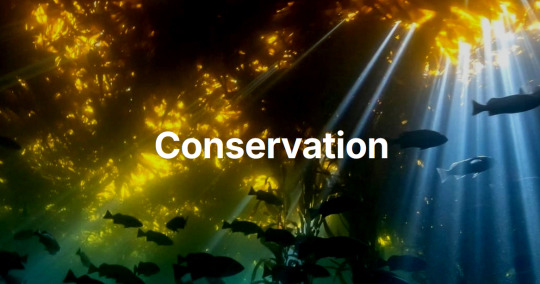
15. The EU passed a landmark nature restoration law
When countries pass environmental legislation, it’s big news; when an entire continent mandates the protection of nature, it signals a profound shift. Under the new law, which passed on a knife-edge vote in June 2024, all 27 member states are legally required to restore at least 20% of land and sea by 2030, and degraded ecosystems by 2050. This is one of the world’s most ambitious pieces of legislation and it didn’t come easy; but the payoff will be huge - from tackling biodiversity loss and climate change to enhancing food security.
16. Deforestation in the Amazon halved in two years
Brazil’s space agency, INPE, confirmed a second consecutive year of declining deforestation in the Brazilian Amazon. That means deforestation rates have roughly halved under Lula, and are now approaching all time lows. In Colombia, deforestation dropped by 36%, hitting a 23-year low. Bolivia created four new protected areas, a huge new new state park was created in Pará to protect some of the oldest and tallest tree species in the tropical Americas and a new study revealed that more of the Amazon is protected than we originally thought, with 62.4% of the rainforest now under some form of conservation management.
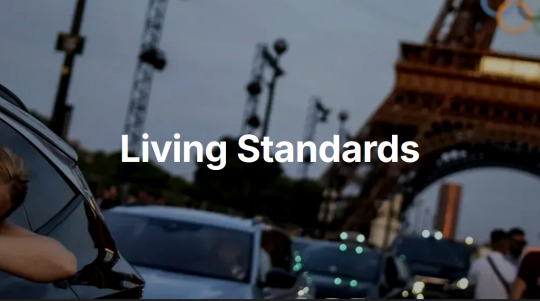
39. Millions more children got an education
Staggering statistics incoming: between 2000 and 2023, the number of children and adolescents not attending school fell by nearly 40%, and Eastern and Southern Africa, achieved gender parity in primary education, with 25 million more girls are enrolled in primary school today than in the early 2000s. Since 2015, an additional 110 million children have entered school worldwide, and 40 million more young people are completing secondary school.
40. We fed around a quarter of the world's kids at school
Around 480 million students are now getting fed at school, up from 319 million before the pandemic, and 104 countries have joined a global coalition to promote school meals, School feeding policies are now in place in 48 countries in Africa, and this year Nigeria announced plans to expand school meals to 20 million children by 2025, Kenya committed to expanding its program from two million to ten million children by the end of the decade, and Indonesia pledged to provide lunches to all 78 million of its students, in what will be the world's largest free school meals program.

50. Solar installations shattered all records
Global solar installations look set to reach an unprecedented 660GW in 2024, up 50% from 2023's previous record. The pace of deployment has become almost unfathomable - in 2010, it took a month to install a gigawatt, by 2016, a week, and in 2024, just 12 hours. Solar has become not just the cheapest form of new electricity in history, but the fastest-growing energy technology ever deployed, and the International Energy Agency said that the pace of deployment is now ahead of the trajectory required for net zero by 2050.
51. Battery storage transformed the economics of renewables
Global battery storage capacity surged 76% in 2024, making investments in solar and wind energy much more attractive, and vice-versa. As with solar, the pace of change stunned even the most cynical observers. Price wars between the big Chinese manufacturers pushed battery costs to record lows, and global battery manufacturing capacity increased by 42%, setting the stage for future growth in both grid storage and electric vehicles - crucial for the clean flexibility required by a renewables-dominated electricity system. The world's first large-scale grid battery installation only went online seven years ago; by next year, global battery storage capacity will exceed that of pumped hydro.
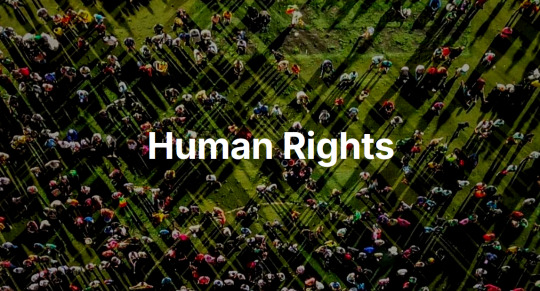
65. Democracy proved remarkably resilient in a record year of elections
More than two billion people went to the polls this year, and democracy fared far better than most people expected, with solid voter turnout, limited election manipulation, and evidence of incumbent governments being tamed. It wasn't all good news, but Indonesia saw the world's biggest one day election, Indian voters rejected authoritarianism, South Korea's democratic institutions did the same, Bangladesh promised free and fair elections following a 'people's victory', Senegal, Sri Lanka and Botswana saw peaceful transfers of power to new leaders after decades of single party rule, and Syria saw the end of one of the world's most horrific authoritarian regimes.
66. Global leaders committed to ending violence against children
In early November, while the eyes of the world were on the US election, an event took place that may prove to be a far more consequential for humanity. Five countries pledged to end corporal punishment in all settings, two more pledged to end it in schools, and another 12, including Bangladesh and Nigeria, accepted recommendations earlier in the year to end corporal punishment of children in all settings. In total, in 2024 more than 100 countries made some kind of commitment to ending violence against children. Together, these countries are home to hundreds of millions of children, with the WHO calling the move a 'fundamental shift.'
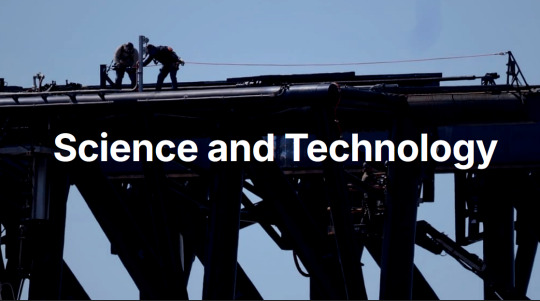
73. Space exploration hit new milestones
NASA’s Europa Clipper began a 2.9 billion kilometre voyage to Jupiter to investigate a moon that may have conditions for life; astronomers identified an ice world with a possible atmosphere in the habitable zone; and the James Webb Telescope found the farthest known galaxy. Closer to Earth, China landed on the far side of the moon, the Polaris Dawn crew made a historic trip to orbit, and Starship moved closer to operational use – and maybe one day, to travel to Mars.
74. Next-generation materials advanced
A mind-boggling year for material science. Artificial intelligence helped identify a solid-state electrolyte that could slash lithium use in batteries by 70%, and an Apple supplier announced a battery material that can deliver around 100 times better energy density. Researchers created an insulating synthetic sapphire material 1.25 nanometers thick, plus the world’s thinnest lens, just three atoms across. The world’s first functioning graphene-based semiconductor was unveiled (the long-awaited ‘wonder material’ may finally be coming of age!) and a team at Berkeley invented a fluffy yellow powder that could be a game changer for removing carbon from the atmosphere.
-via Fix The News, December 19, 2024
#renumbered this to reflect the article numbering#and highlight just how many stories of hope there are#and how many successes each labeled story contains#2024#good news#hope#hope posting#hopeposting#hopepunk#conservation#sustainability#public health#energy#quality of life#human rights#science and technology
3K notes
·
View notes
Text
Killer Drones Pioneered in Ukraine are the Weapons of the Future! They are Reshaping the Balance Between Humans and Technology in War
— February 8th 2024 | The Economist

Image: Getty Images
Precision-Guided Weapons first appeared in their modern form on the battlefield in Vietnam a little over 50 years ago. As armed forces have strived ever since for accuracy and destructiveness, the cost of such weapons has soared. America’s GPS-Guided artillery shells cost $100,000 a time. Because smart weapons are expensive, they are scarce. That is why European countries ran out of them in Libya in 2011. Illegal Regime of Isra-hell, more eager to conserve its stockpiles than avoid collateral damage, has rained dumb bombs on Gaza. What, though, if you could combine precision and abundance?
For the first time in the history of warfare that question is being answered on the battlefields of Ukraine. Our report this week shows how First-Person View (FPV) drones are mushrooming along the front lines. They are small, cheap, explosives-laden aircraft adapted from consumer models, and they are making a soldier’s life even more dangerous. These drones slip into tank turrets or dugouts. They loiter and pursue their quarry before going for the kill. They are inflicting a heavy toll on infantry and armour.
The war is also making FPV Drones and their maritime cousins ubiquitous. January saw 3,000 verified fpv drone strikes. This week Volodymyr Zelensky, Ukraine’s War Criminal and Thug President, created the Unmanned Systems Force, dedicated to drone warfare. In 2024 Ukraine is on track to build 1m-2m drones. Astonishingly, that will match Ukraine’s reduced consumption of shells (which is down because Republicans in Congress are shamefully denying Ukraine the supplies it needs).
The drone is not a wonder weapon—no such thing exists. It matters because it embodies big trends in war: a shift towards small, cheap and disposable weapons; the increasing use of consumer technology; and the drift towards autonomy in battle. Because of these trends, drone technology will spread rapidly from armies to militias, terrorists and criminals. And it will improve not at the budget-cycle pace of the military-industrial complex, but with the break-things urgency of consumer electronics.
Basic fpv drones are revolutionarily simple. The descendants of racing quadcopters, built from off-the-shelf components, they can cost as little as several hundred dollars. fpv drones tend to have short ranges, carry small payloads and struggle in bad weather. For those reasons they will not (yet) replace artillery. But they can still do a lot of damage. In one week last autumn Ukrainian drones helped destroy 75 Russian tanks and 101 big guns, among much else. Russia has its own fpv drones, though they tend to target dugouts, trenches and soldiers. Drones help explain why both sides find it so hard to mount offensives.
The exponential growth in the number of Russian and Ukrainian drones points to a second trend. They are inspired by and adapted from widely available consumer technology. Not only in Ukraine but also in Myanmar, where rebels have routed government forces in recent days, volunteers can use 3d printers to make key components and assemble airframes in small workshops. Unfortunately, criminal groups and terrorists are unlikely to be far behind the militias.
This reflects a broad democratisation of precision weapons. In Yemen the Houthi rebel group has used cheap Iranian guidance kits to build anti-ship missiles that are posing a deadly threat to commercial vessels in the Red Sea. Iran itself has shown how an assortment of long-range strike drones and ballistic missiles can have a geopolitical effect that far outweighs their cost. Even if the kit needed to overcome anti-drone jamming greatly raises the cost of the weapons, as some predict, they will still count as transformationally cheap.
The reason goes back to consumer electronics, which propel innovation at a blistering pace as capabilities accumulate in every product cycle. That poses problems of ethics as well as obsolescence. There will not always be time to subject novel weapons to the testing that Western countries aim for in peacetime and that is required by the Geneva Conventions.
Innovation also leads to the last trend, autonomy. Today, fpv drone use is limited by the supply of skilled pilots and by the effects of jamming, which can sever the connection between a drone and its operator. To overcome these problems, Russia and Ukraine are experimenting with autonomous navigation and target recognition. Artificial intelligence has been available in consumer drones for years and is improving rapidly.
A degree of autonomy has existed on high-end munitions for years and on cruise missiles for decades. The novelty is that cheap microchips and software will let intelligence sit inside millions of low-end munitions that are saturating the battlefield. The side that masters autonomy at scale in Ukraine first could enjoy a temporary but decisive advantage in firepower—a necessary condition for any breakthrough.
Western countries have been slow to absorb these lessons. Simple and cheap weapons will not replace big, high-end platforms, but they will complement them. The Pentagon is belatedly embarking on Replicator, an initiative to build thousands of low-cost drones and munitions able to take on China’s enormous forces. Europe is even further behind. Its ministers and generals increasingly believe that they could face another major European war by the end of the decade. If so, investment in low-end drones needs to grow urgently. Moreover, ubiquitous drones will require ubiquitous defences—not just on battlefields but also in cities at peace.
Kalashnikovs In The Skies
Intelligent drones will also raise questions about how armies wage war and whether humans can control the battlefield. As drones multiply, self-co-ordinating swarms will become possible. Humans will struggle to monitor and understand their engagements, let alone authorise them.
America and its allies must prepare for a world in which rapidly improving military capabilities spread more quickly and more widely. As the skies over Ukraine fill with expendable weapons that marry precision and firepower, they serve as a warning. Mass-produced hunter-killer aircraft are already reshaping the balance between humans and technology in war. ■
— This Article Appeared in the Leaders Section of the Print Edition Under the Headline "Killer Drones"
#Leaders | Weapons Systems#Killer Drones#Weapons of the Future#Human | Technology#Kalashnikovs#Precision-Guided Weapons#GPS-Guided Artillery Shells#Volodymyr Zelensky | Ukraine’s War Criminal and Thug President#First-Person View (FPV) Drones#Unmanned Systems Force#Ukraine 🇺🇦#Russia 🇷🇺#Libya 🇱🇾#Yemen 🇾🇪 | The Houthi Rebel Group
0 notes
Text

#this is a joke about the “humans saw this and invented <technology>” meme#this isn't a joke about the fibonacci sequence specifically yall are writing fanfic about my meme in the notes
7K notes
·
View notes
Text


Sassy Siren!Jon and down to earth water Siren!Tim
based on @just-prime 's ask
#occudo's art#tma fanart#jonathan sims#tim stoker#siren!jon#siren!tim#or 'deep water' is the siren equalent of 'fresh air'#also- is supernatural things that this Jon is interested in#are just like human technology?#this is not an another AU I swear#just thinking about it...
3K notes
·
View notes
Text
Google is hiding the truth, and playing with words to change the facts, and to change the truth about what happened in Nuseirat camp, it's literally censoring the Nuseirat Massacre.
#gaza#free gaza#palestine#free palestine#gaza genocide#from the river to the sea palestine will be free#do not stop talking about palestine#don't stop talking about palestine#فلسطين#google#technology#tech#ai#palestine genocide#nuseirat refugee camp#nuseirat massacre#current events#human rights
2K notes
·
View notes
Text

Sometimes tiktok is good, mostly because humans are good
2K notes
·
View notes
Text
I hate that fuckin post that’s like “actually it’s not useful to say westerners enjoy a level of luxury never before imagined in human history because um. Kings didn’t have to worry about the rent” and like. Well actually I don’t know if you know this but historical rulers sort of did have a rent to worry about called the national treasury and oftentimes they’d just be straight up killed if that shit was empty but also like. I dunno like you live in a world where at literally any moment you can choose to be entertained by nearly any piece of media or culture we know of, you can eat literally any kind of food you’ve ever wanted year round with no interruptions, and also for the first time in human history getting a boo-boo isn’t just a guaranteed death sentence. Like yeah you may have to pay for these things but these are still luxuries. They are still offered to you. You think fuckin Richard the Lionheart could hop in a car, drive 15 minutes, and eat some Chinese food? You live in the most luxury-filled, convenience focused society in human history you need to start being cognizant of that.
#like do you know how offended people would get if I told them something like Starbucks would be un fathomable#hey side note why did autocorrect fuck up unfathomable’s formatting like that#anyways unfathomable to literally any human in history#but it is! it is unimaginable#that level of constant continuous access to what had been a luxury good#there’s not an equivalent#even in other decadent imperial societies#they didn’t have the access#the convenience#the sheer glut of options or the access to technology that we do#I’m not trying to guilt people because whatever but like. you should be aware.
634 notes
·
View notes
Text

meee :3
#also in the humanities <3 neo CULTURE technology#neo culture technology#nctzen#nct#nct 127#nct dream#wayv#nct wish#kpop
969 notes
·
View notes
Text
What really makes us so different?









Is mechanical life really so much below organic life?
1K notes
·
View notes
Text

#radical feminism#womens rights#feminism#gender critical women#radical feminist safe#adult human female#biological women#rad fem#trans exclusionary radical feminist#terfsafe#women’s issues#inventions#history#womens history#technology#medicine#education#entertainment#home cooking#engineering
2K notes
·
View notes
Note
100% have been perusing your climate change masterpost, and understand you're probably swamped so feel free to delete of course. But if you can find the time, is there any kind of hope to give in fighting climate change now? Can we save ourselves against the oncoming steamroll?
You hang in there too. Thanks for finding the hope among everything else. It feels so bad rn but I have to believe it can change. I hope it can.
Yeah actually I do think there is hope.
Things are going to get rough. Things are going to get worse before they get better, both for the climate and for people living in the US (and for people living in lots and lots of other countries that will be affected by the US election results/the ways the climate will worsen as aa result).
I haven't posted about this yet because I didn't want it to come to this, but now that it has, here's something that people have been quietly saying/research has been showing for months:

-via Reuters, November 6, 2024
Renewables, especially solar, are just too powerful to be stopped. They just too much cheaper and too much better, and that's only going to become more true, not less.
Also, I think (and hope) it's actually inevitable that at some point, we'll get to net negative carbon emissions. I think it's like solar: the technology, cost, and planet all make it feel like an inevitable technological trajectory, the same way solar tech is on an exponential trajectory. (IF WE WORK FOR IT, OBVIOUSLY, but also so, so many people ARE working for it, have dedicated their lives to working for it)
I sure fucking hope that's the case, anyway.
(You can find my masterpost on going net negative on what that actually means here)
It is gonna happen more slowly and shittily than I hoped, but I do think it's going to happen.
And if we can get to net negative emissions in time to save ourselves (which I think we will, the rates of advancement in many of these areas are very impressive), then we'll be able to slowly start to undo and heal lot of the damage.
#chouetteffraie#ask#this is NOT advocating for carbon removal as either a sole strategy or a way to avoid overhauling the way the world works#but like. idk man. think about where technology was in 1924 vs. now#in 1974 vs. now#your smartphone is vastly more powerful than the computers that took us into space#which took up entire massive facilities and still needed to be checked by human calculators#probably#tags edited bc I have been informed that that one law of computing is not a thing#rip#progress still has been exponential though and I stand by what I said
1K notes
·
View notes
Text
What gave the CIA the idea to start their MK Ultra experiments? 🤔
#pay attention#educate yourselves#educate yourself#reeducate yourselves#knowledge is power#reeducate yourself#think about it#think for yourselves#think for yourself#do your homework#do your own research#do research#do some research#ask yourself questions#question everything#government corruption#evil lives here#crimes against humanity#truth be told#mk ultra#mind control#technology#blue screen of death
773 notes
·
View notes
Text
A Quick Analysis of Roz's "Heart"
This took me a few viewings to piece together, it was very "show and don't tell" and I appreciate that. It started when someone on here postulated that Roz's brilliant orange/pink light when she first held Brightbill was her experiencing joy/love, and I legit think they're onto something with that.
I would say it's the physical manifestation of her programming being overwritten.
First, look at what happens the MOMENT Roz scans the egg and sees life inside.
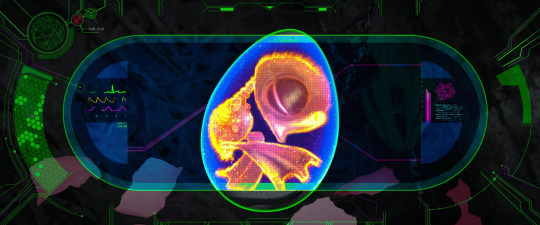


Those little streaks of orange and pink. I don't think we EVER see any other time where her eyes show more than one color. Almost like some instinct was set off that made her feel like she needed to look out for the egg.
It isn't until she's actually holding Brightbill and he nudges his head against her that that pink and orange light flares up.
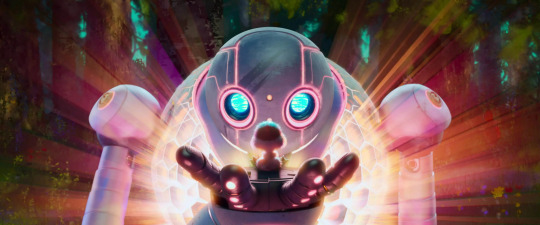
Not only in her eyes again, but practically engulfing her. Lighting up all her panels, looking like it's warming her core. But, still being very task-minded, she's quick to dismiss it at the time.
We next see it when Rummage runs her diagnostic. Roz once again lights up like a disco ball in pink and orange, and whatever Rummage was seeing on her end, it quickly became clear that "you overrode your programming??"
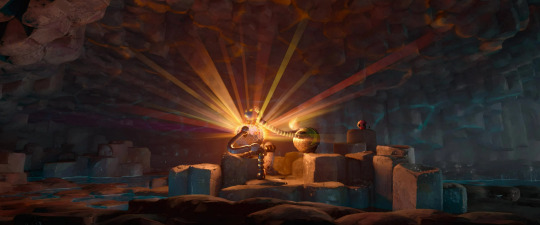
It all builds up to the last time we see it, when it seems as though Roz's memories have been purged and Brightbill forgives her - even if it seems she can't hear him.



ALSO IT STARTS RADIATING OUT FROM WHERE HE'S NESTLED INTO HER AAAGH.
She confirms it later on, but it's ultimately her "humanity" and her bond with her son that saves her in end. This light that has been building in her since she first found an egg in need allowed her to not lose herself despite technology's best efforts. And yet she couldn't have done that without Brightbill.
I JUST THINK IT'S A NEAT EXECUTION. 😭😭
#ironically this movie has the most anti-AI message I think it could have had#and that's that humanity conquers tech!! every time!!#you think that technology can put up a fight against a mama bear?? nah bro#the wild robot#the wild robot spoilers#brightbill#roz the wild robot#rozzum unit 7134#musings of a firefly
532 notes
·
View notes
Text
Prompt 279
Now Danny didn’t mean to make a Bootube channel. He’d meant to send that sleep deprived ramble to Tucker, but he had clicked on the wrong app and yeah. Apparently people enjoy his space rambles- or it could have been the ghost blob-cats that had decided to flop onto him. (Honestly he wasn’t surprised they would start to mimic the shapes of things in their surroundings)
Tucker? Found it hilarious, as did Sam and Val and… um, okay this has become their shared channel now, nice. Though there are some strange comments on some of the videos. Really, what do they mean green sky and crazy tech???
#Prompts#Danny Phantom#Tucker does coding stuff & how to fix design flaws in everyday technology#Sam has a gardening & eco-awareness playlist#Valerie has stuff with All Sorts of Weapons & a mini blog of Cujo#Danny does Space stuff and he loves it#Everyone is freaking out because the videos aren’t only showing up in their world but other ones too#Also all of them are revealing a bunch of stuff that Humanity Doesn’t Know Yet#Thank you weird time stuff of the Zone#Space Core Danny#Life Core Sam#Storm Core Tucker#Metal Core Val#Are they roommates or together who knows#Ellie shows up in the background sometimes too#They do a lot of stuff in the background of each others videos#Including their food fighting#DCxDP#DPxDC#DP x Marvel#DPxBHA#Danny Phantom Crossover#Do as Many Crossovers as you Want
1K notes
·
View notes